- Hard Seltzers Market By Flavor (USD Billion, 2019-2035)
- Citrus
- Berry
- Tropical
- Spiced
- Other
- Hard Seltzers Market By Packaging Type (USD Billion, 2019-2035)
- Hard Seltzers Market By Alcohol Content (USD Billion, 2019-2035)
- Low Alcohol
- Moderate Alcohol
- High Alcohol
- Hard Seltzers Market By Distribution Channel (USD Billion, 2019-2035)
- Online Retail
- Supermarkets
- Convenience Stores
- Bars and Nightclubs
- Hard Seltzers Market By Regional (USD Billion, 2019-2035)
- North America
- Europe
- South America
- Asia Pacific
- Middle East and Africa
North America Outlook (USD Billion, 2019-2035)
North America Hard Seltzers Market by Flavor Type
Citrus
Berry
Tropical
Spiced
Other
North America Hard Seltzers Market by Packaging Type
Cans
Bottles
Pouches
North America Hard Seltzers Market by Alcohol Content Type
Low Alcohol
Moderate Alcohol
High Alcohol
North America Hard Seltzers Market by Distribution Channel Type
Online Retail
Supermarkets
Convenience Stores
Bars and Nightclubs
North America Hard Seltzers Market by Regional Type
US
Canada
US Outlook (USD Billion, 2019-2035)
US Hard Seltzers Market by Flavor Type
Citrus
Berry
Tropical
Spiced
Other
US Hard Seltzers Market by Packaging Type
Cans
Bottles
Pouches
US Hard Seltzers Market by Alcohol Content Type
Low Alcohol
Moderate Alcohol
High Alcohol
US Hard Seltzers Market by Distribution Channel Type
Online Retail
Supermarkets
Convenience Stores
Bars and Nightclubs
CANADA Outlook (USD Billion, 2019-2035)
CANADA Hard Seltzers Market by Flavor Type
Citrus
Berry
Tropical
Spiced
Other
CANADA Hard Seltzers Market by Packaging Type
Cans
Bottles
Pouches
CANADA Hard Seltzers Market by Alcohol Content Type
Low Alcohol
Moderate Alcohol
High Alcohol
CANADA Hard Seltzers Market by Distribution Channel Type
Online Retail
Supermarkets
Convenience Stores
Bars and Nightclubs
Europe Outlook (USD Billion, 2019-2035)
Europe Hard Seltzers Market by Flavor Type
Citrus
Berry
Tropical
Spiced
Other
Europe Hard Seltzers Market by Packaging Type
Cans
Bottles
Pouches
Europe Hard Seltzers Market by Alcohol Content Type
Low Alcohol
Moderate Alcohol
High Alcohol
Europe Hard Seltzers Market by Distribution Channel Type
Online Retail
Supermarkets
Convenience Stores
Bars and Nightclubs
Europe Hard Seltzers Market by Regional Type
Germany
UK
France
Russia
Italy
Spain
Rest of Europe
GERMANY Outlook (USD Billion, 2019-2035)
GERMANY Hard Seltzers Market by Flavor Type
Citrus
Berry
Tropical
Spiced
Other
GERMANY Hard Seltzers Market by Packaging Type
Cans
Bottles
Pouches
GERMANY Hard Seltzers Market by Alcohol Content Type
Low Alcohol
Moderate Alcohol
High Alcohol
GERMANY Hard Seltzers Market by Distribution Channel Type
Online Retail
Supermarkets
Convenience Stores
Bars and Nightclubs
UK Outlook (USD Billion, 2019-2035)
UK Hard Seltzers Market by Flavor Type
Citrus
Berry
Tropical
Spiced
Other
UK Hard Seltzers Market by Packaging Type
Cans
Bottles
Pouches
UK Hard Seltzers Market by Alcohol Content Type
Low Alcohol
Moderate Alcohol
High Alcohol
UK Hard Seltzers Market by Distribution Channel Type
Online Retail
Supermarkets
Convenience Stores
Bars and Nightclubs
FRANCE Outlook (USD Billion, 2019-2035)
FRANCE Hard Seltzers Market by Flavor Type
Citrus
Berry
Tropical
Spiced
Other
FRANCE Hard Seltzers Market by Packaging Type
Cans
Bottles
Pouches
FRANCE Hard Seltzers Market by Alcohol Content Type
Low Alcohol
Moderate Alcohol
High Alcohol
FRANCE Hard Seltzers Market by Distribution Channel Type
Online Retail
Supermarkets
Convenience Stores
Bars and Nightclubs
RUSSIA Outlook (USD Billion, 2019-2035)
RUSSIA Hard Seltzers Market by Flavor Type
Citrus
Berry
Tropical
Spiced
Other
RUSSIA Hard Seltzers Market by Packaging Type
Cans
Bottles
Pouches
RUSSIA Hard Seltzers Market by Alcohol Content Type
Low Alcohol
Moderate Alcohol
High Alcohol
RUSSIA Hard Seltzers Market by Distribution Channel Type
Online Retail
Supermarkets
Convenience Stores
Bars and Nightclubs
ITALY Outlook (USD Billion, 2019-2035)
ITALY Hard Seltzers Market by Flavor Type
Citrus
Berry
Tropical
Spiced
Other
ITALY Hard Seltzers Market by Packaging Type
Cans
Bottles
Pouches
ITALY Hard Seltzers Market by Alcohol Content Type
Low Alcohol
Moderate Alcohol
High Alcohol
ITALY Hard Seltzers Market by Distribution Channel Type
Online Retail
Supermarkets
Convenience Stores
Bars and Nightclubs
SPAIN Outlook (USD Billion, 2019-2035)
SPAIN Hard Seltzers Market by Flavor Type
Citrus
Berry
Tropical
Spiced
Other
SPAIN Hard Seltzers Market by Packaging Type
Cans
Bottles
Pouches
SPAIN Hard Seltzers Market by Alcohol Content Type
Low Alcohol
Moderate Alcohol
High Alcohol
SPAIN Hard Seltzers Market by Distribution Channel Type
Online Retail
Supermarkets
Convenience Stores
Bars and Nightclubs
REST OF EUROPE Outlook (USD Billion, 2019-2035)
REST OF EUROPE Hard Seltzers Market by Flavor Type
Citrus
Berry
Tropical
Spiced
Other
REST OF EUROPE Hard Seltzers Market by Packaging Type
Cans
Bottles
Pouches
REST OF EUROPE Hard Seltzers Market by Alcohol Content Type
Low Alcohol
Moderate Alcohol
High Alcohol
REST OF EUROPE Hard Seltzers Market by Distribution Channel Type
Online Retail
Supermarkets
Convenience Stores
Bars and Nightclubs
APAC Outlook (USD Billion, 2019-2035)
APAC Hard Seltzers Market by Flavor Type
Citrus
Berry
Tropical
Spiced
Other
APAC Hard Seltzers Market by Packaging Type
Cans
Bottles
Pouches
APAC Hard Seltzers Market by Alcohol Content Type
Low Alcohol
Moderate Alcohol
High Alcohol
APAC Hard Seltzers Market by Distribution Channel Type
Online Retail
Supermarkets
Convenience Stores
Bars and Nightclubs
APAC Hard Seltzers Market by Regional Type
China
India
Japan
South Korea
Malaysia
Thailand
Indonesia
Rest of APAC
CHINA Outlook (USD Billion, 2019-2035)
CHINA Hard Seltzers Market by Flavor Type
Citrus
Berry
Tropical
Spiced
Other
CHINA Hard Seltzers Market by Packaging Type
Cans
Bottles
Pouches
CHINA Hard Seltzers Market by Alcohol Content Type
Low Alcohol
Moderate Alcohol
High Alcohol
CHINA Hard Seltzers Market by Distribution Channel Type
Online Retail
Supermarkets
Convenience Stores
Bars and Nightclubs
INDIA Outlook (USD Billion, 2019-2035)
INDIA Hard Seltzers Market by Flavor Type
Citrus
Berry
Tropical
Spiced
Other
INDIA Hard Seltzers Market by Packaging Type
Cans
Bottles
Pouches
INDIA Hard Seltzers Market by Alcohol Content Type
Low Alcohol
Moderate Alcohol
High Alcohol
INDIA Hard Seltzers Market by Distribution Channel Type
Online Retail
Supermarkets
Convenience Stores
Bars and Nightclubs
JAPAN Outlook (USD Billion, 2019-2035)
JAPAN Hard Seltzers Market by Flavor Type
Citrus
Berry
Tropical
Spiced
Other
JAPAN Hard Seltzers Market by Packaging Type
Cans
Bottles
Pouches
JAPAN Hard Seltzers Market by Alcohol Content Type
Low Alcohol
Moderate Alcohol
High Alcohol
JAPAN Hard Seltzers Market by Distribution Channel Type
Online Retail
Supermarkets
Convenience Stores
Bars and Nightclubs
SOUTH KOREA Outlook (USD Billion, 2019-2035)
SOUTH KOREA Hard Seltzers Market by Flavor Type
Citrus
Berry
Tropical
Spiced
Other
SOUTH KOREA Hard Seltzers Market by Packaging Type
Cans
Bottles
Pouches
SOUTH KOREA Hard Seltzers Market by Alcohol Content Type
Low Alcohol
Moderate Alcohol
High Alcohol
SOUTH KOREA Hard Seltzers Market by Distribution Channel Type
Online Retail
Supermarkets
Convenience Stores
Bars and Nightclubs
MALAYSIA Outlook (USD Billion, 2019-2035)
MALAYSIA Hard Seltzers Market by Flavor Type
Citrus
Berry
Tropical
Spiced
Other
MALAYSIA Hard Seltzers Market by Packaging Type
Cans
Bottles
Pouches
MALAYSIA Hard Seltzers Market by Alcohol Content Type
Low Alcohol
Moderate Alcohol
High Alcohol
MALAYSIA Hard Seltzers Market by Distribution Channel Type
Online Retail
Supermarkets
Convenience Stores
Bars and Nightclubs
THAILAND Outlook (USD Billion, 2019-2035)
THAILAND Hard Seltzers Market by Flavor Type
Citrus
Berry
Tropical
Spiced
Other
THAILAND Hard Seltzers Market by Packaging Type
Cans
Bottles
Pouches
THAILAND Hard Seltzers Market by Alcohol Content Type
Low Alcohol
Moderate Alcohol
High Alcohol
THAILAND Hard Seltzers Market by Distribution Channel Type
Online Retail
Supermarkets
Convenience Stores
Bars and Nightclubs
INDONESIA Outlook (USD Billion, 2019-2035)
INDONESIA Hard Seltzers Market by Flavor Type
Citrus
Berry
Tropical
Spiced
Other
INDONESIA Hard Seltzers Market by Packaging Type
Cans
Bottles
Pouches
INDONESIA Hard Seltzers Market by Alcohol Content Type
Low Alcohol
Moderate Alcohol
High Alcohol
INDONESIA Hard Seltzers Market by Distribution Channel Type
Online Retail
Supermarkets
Convenience Stores
Bars and Nightclubs
REST OF APAC Outlook (USD Billion, 2019-2035)
REST OF APAC Hard Seltzers Market by Flavor Type
Citrus
Berry
Tropical
Spiced
Other
REST OF APAC Hard Seltzers Market by Packaging Type
Cans
Bottles
Pouches
REST OF APAC Hard Seltzers Market by Alcohol Content Type
Low Alcohol
Moderate Alcohol
High Alcohol
REST OF APAC Hard Seltzers Market by Distribution Channel Type
Online Retail
Supermarkets
Convenience Stores
Bars and Nightclubs
South America Outlook (USD Billion, 2019-2035)
South America Hard Seltzers Market by Flavor Type
Citrus
Berry
Tropical
Spiced
Other
South America Hard Seltzers Market by Packaging Type
Cans
Bottles
Pouches
South America Hard Seltzers Market by Alcohol Content Type
Low Alcohol
Moderate Alcohol
High Alcohol
South America Hard Seltzers Market by Distribution Channel Type
Online Retail
Supermarkets
Convenience Stores
Bars and Nightclubs
South America Hard Seltzers Market by Regional Type
Brazil
Mexico
Argentina
Rest of South America
BRAZIL Outlook (USD Billion, 2019-2035)
BRAZIL Hard Seltzers Market by Flavor Type
Citrus
Berry
Tropical
Spiced
Other
BRAZIL Hard Seltzers Market by Packaging Type
Cans
Bottles
Pouches
BRAZIL Hard Seltzers Market by Alcohol Content Type
Low Alcohol
Moderate Alcohol
High Alcohol
BRAZIL Hard Seltzers Market by Distribution Channel Type
Online Retail
Supermarkets
Convenience Stores
Bars and Nightclubs
MEXICO Outlook (USD Billion, 2019-2035)
MEXICO Hard Seltzers Market by Flavor Type
Citrus
Berry
Tropical
Spiced
Other
MEXICO Hard Seltzers Market by Packaging Type
Cans
Bottles
Pouches
MEXICO Hard Seltzers Market by Alcohol Content Type
Low Alcohol
Moderate Alcohol
High Alcohol
MEXICO Hard Seltzers Market by Distribution Channel Type
Online Retail
Supermarkets
Convenience Stores
Bars and Nightclubs
ARGENTINA Outlook (USD Billion, 2019-2035)
ARGENTINA Hard Seltzers Market by Flavor Type
Citrus
Berry
Tropical
Spiced
Other
ARGENTINA Hard Seltzers Market by Packaging Type
Cans
Bottles
Pouches
ARGENTINA Hard Seltzers Market by Alcohol Content Type
Low Alcohol
Moderate Alcohol
High Alcohol
ARGENTINA Hard Seltzers Market by Distribution Channel Type
Online Retail
Supermarkets
Convenience Stores
Bars and Nightclubs
REST OF SOUTH AMERICA Outlook (USD Billion, 2019-2035)
REST OF SOUTH AMERICA Hard Seltzers Market by Flavor Type
Citrus
Berry
Tropical
Spiced
Other
REST OF SOUTH AMERICA Hard Seltzers Market by Packaging Type
Cans
Bottles
Pouches
REST OF SOUTH AMERICA Hard Seltzers Market by Alcohol Content Type
Low Alcohol
Moderate Alcohol
High Alcohol
REST OF SOUTH AMERICA Hard Seltzers Market by Distribution Channel Type
Online Retail
Supermarkets
Convenience Stores
Bars and Nightclubs
MEA Outlook (USD Billion, 2019-2035)
MEA Hard Seltzers Market by Flavor Type
Citrus
Berry
Tropical
Spiced
Other
MEA Hard Seltzers Market by Packaging Type
Cans
Bottles
Pouches
MEA Hard Seltzers Market by Alcohol Content Type
Low Alcohol
Moderate Alcohol
High Alcohol
MEA Hard Seltzers Market by Distribution Channel Type
Online Retail
Supermarkets
Convenience Stores
Bars and Nightclubs
MEA Hard Seltzers Market by Regional Type
GCC Countries
South Africa
Rest of MEA
GCC COUNTRIES Outlook (USD Billion, 2019-2035)
GCC COUNTRIES Hard Seltzers Market by Flavor Type
Citrus
Berry
Tropical
Spiced
Other
GCC COUNTRIES Hard Seltzers Market by Packaging Type
Cans
Bottles
Pouches
GCC COUNTRIES Hard Seltzers Market by Alcohol Content Type
Low Alcohol
Moderate Alcohol
High Alcohol
GCC COUNTRIES Hard Seltzers Market by Distribution Channel Type
Online Retail
Supermarkets
Convenience Stores
Bars and Nightclubs
SOUTH AFRICA Outlook (USD Billion, 2019-2035)
SOUTH AFRICA Hard Seltzers Market by Flavor Type
Citrus
Berry
Tropical
Spiced
Other
SOUTH AFRICA Hard Seltzers Market by Packaging Type
Cans
Bottles
Pouches
SOUTH AFRICA Hard Seltzers Market by Alcohol Content Type
Low Alcohol
Moderate Alcohol
High Alcohol
SOUTH AFRICA Hard Seltzers Market by Distribution Channel Type
Online Retail
Supermarkets
Convenience Stores
Bars and Nightclubs
REST OF MEA Outlook (USD Billion, 2019-2035)
REST OF MEA Hard Seltzers Market by Flavor Type
Citrus
Berry
Tropical
Spiced
Other
REST OF MEA Hard Seltzers Market by Packaging Type
Cans
Bottles
Pouches
REST OF MEA Hard Seltzers Market by Alcohol Content Type
Low Alcohol
Moderate Alcohol
High Alcohol
REST OF MEA Hard Seltzers Market by Distribution Channel Type
Online Retail
Supermarkets
Convenience Stores
Bars and Nightclubs
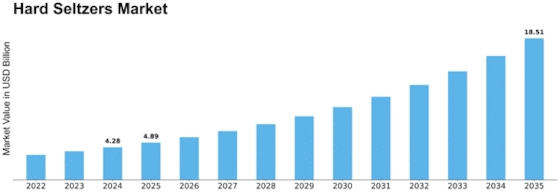

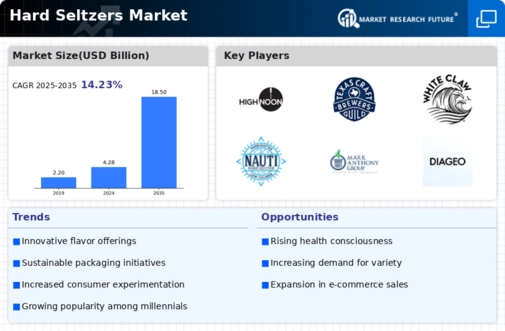
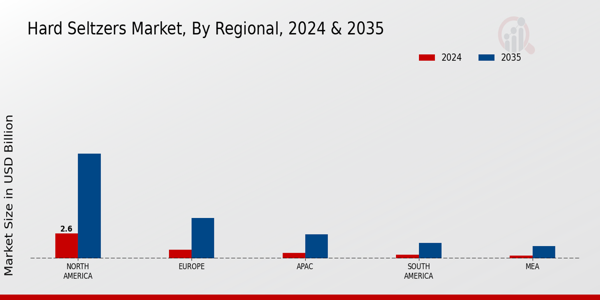
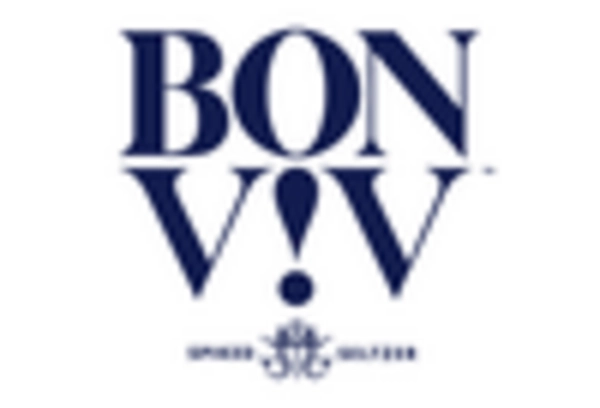
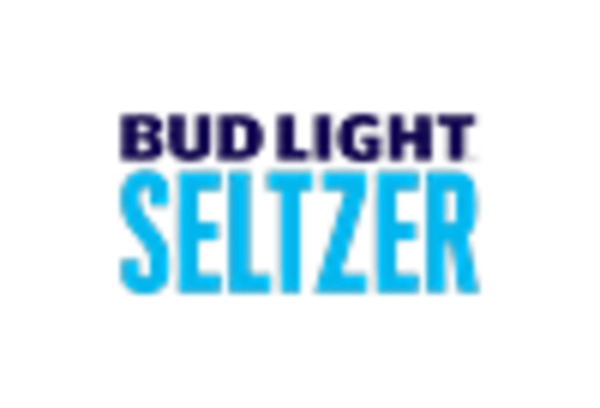
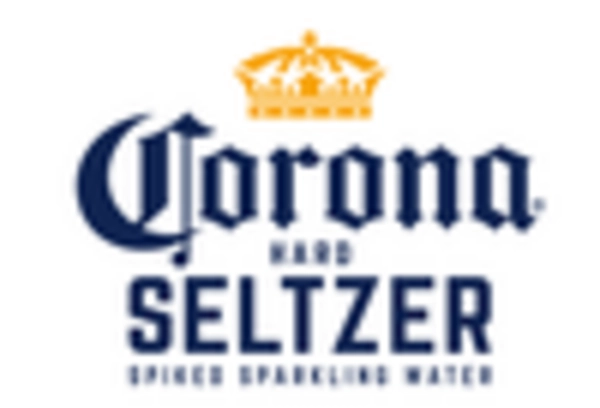

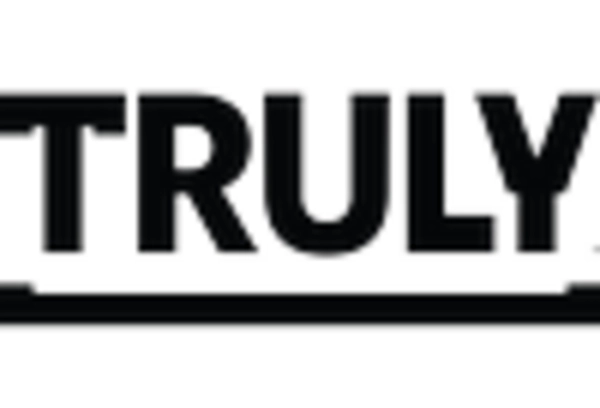
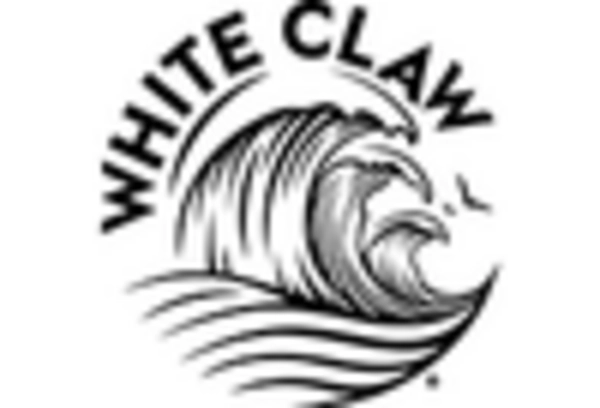

Leave a Comment